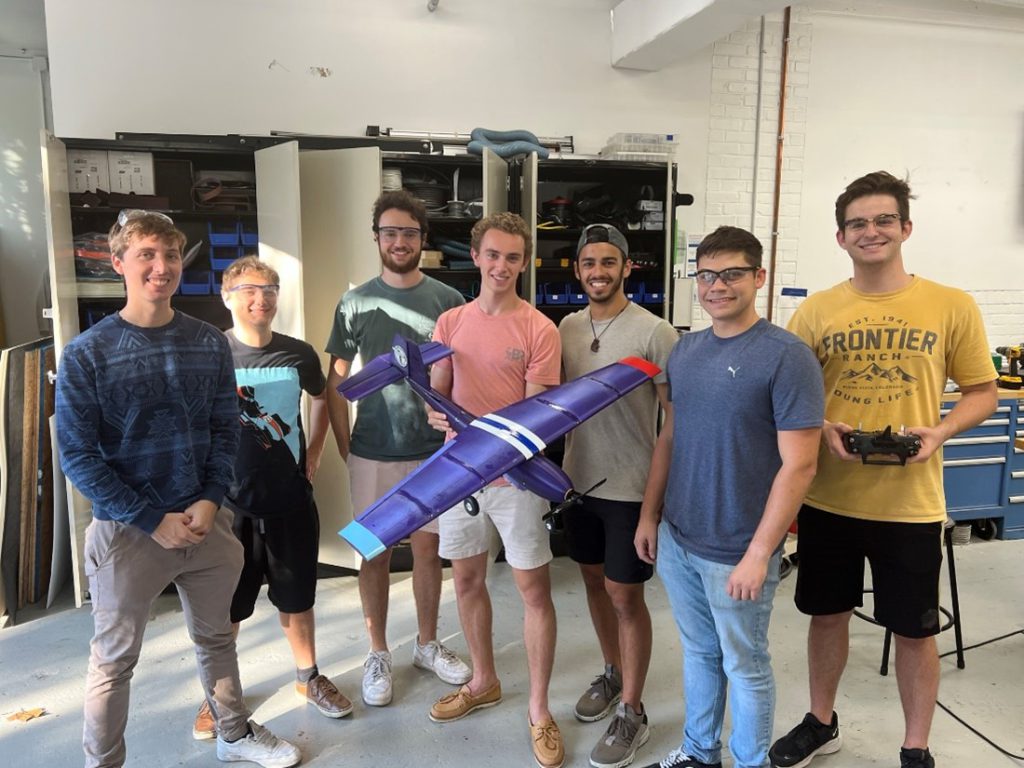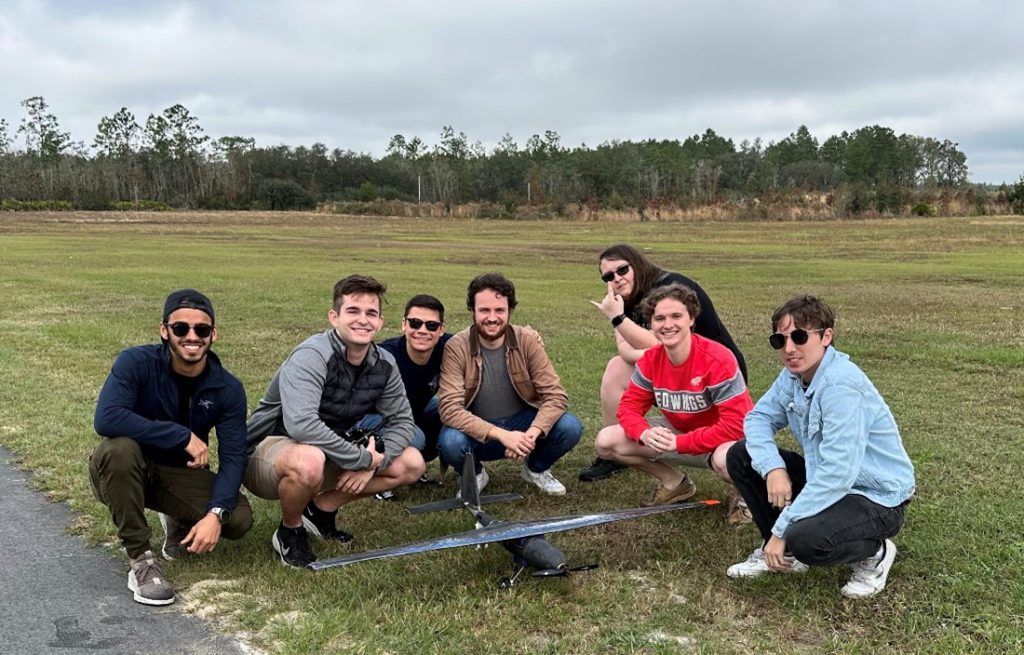UF Aerospace Engineering Capstone students brought to life aircraft previously only imagined on-paper. Taking to the skies, these real aircraft flights culminated a new initiative by Dr. Ting Dong, a UF MAE instructional assistant professor to add a build / realization component to her EAS4710 Aircraft Design course. Previously, Dr. Dong’s senior design students produced CAD designs for aircraft through extensive calculations and analysis supporting their viability. However, in Fall 2022 she encouraged her class to push further by converting their designs into real aircraft using unexpected fabrication techniques: 3D printing and carbon fiber layups.
Working in groups, EAS4710 students designed their airplanes from scratch to a set of design and performance requirements that governed how the wings, tail, fuselage and landing gears were configured. Students also selected and laid out the airplanes’ power and control electronics. However, that’s where the 2022 Fall EAS4710 class departed from previous semesters. For the first time, students designed their aircraft knowing they would also need to build and fly them as Radio Controlled (RC) airplanes by the end of the semester.
Instead of conventional RC airplane construction materials like balsa and canvas, Dr. Dong’s class capitalized on the print farm of Prusa i3 MK3s+ 3D printers available to students in the MAE Capstone senior design laboratory to make the airframes from plastic. Fused Filament Fabrication 3D printing is a rapid prototyping technique used widely in industry and academia to make custom parts with complex geometries quickly and easily.

A common filament material for 3D print prototyping is Polylactic Acid (PLA), and students printed the first iterations of their designs using PLA. Unfortunately, the PLA aircraft suffered an in-flight stability problem and crashed during the test flight. Since PLA is brittle, the crash damaged the protype airplane beyond repair.
However, UF Aerospace Engineering students do not give up! They modified their design to improve the aircraft’s stability. In addition, to prevent catastrophic damage arising from minor crashes, they decided to make the wing and tail structure using carbon fiber composites. Even though none of the students had professional training on composite manufacturing techniques, they did their own research and taught themselves the technique. They hit upon using a hot wire foam cutter to cut the wing and tail structure they designed out of foam. These molds were then used as the core in the process of carbon fiber layups. For the fuselage structure, the student performed carbon fiber layups over 3D printed PLA. The combination of carbon fiber and 3D printed structure made the new aircraft much stronger while achieving nearly the same light weight. On its second test flight, the improved airplane flew beautifully! This accomplishment was achieved within two weeks after the first failed test flight!
Here is the successful test flight video: https://youtu.be/h015N_PhfMQ
Dr. Dong and her students effectively demonstrated that a design, build, and fly EAS4710 Capstone experience is feasible within a single semester when the class has access to rapid prototyping capability.

Story by: Dr. Matthew Traum
Instructional Associate Professor
UF Mechanical & Aerospace Engineering
February 7, 2023
